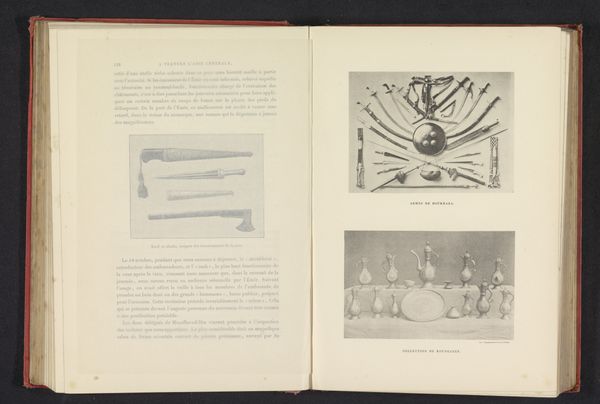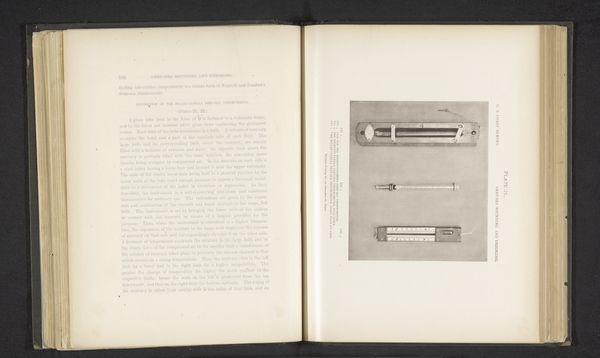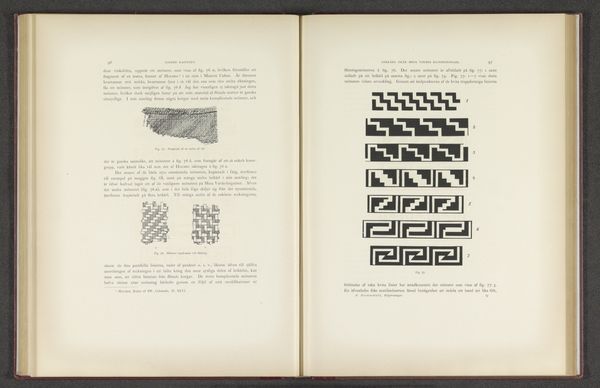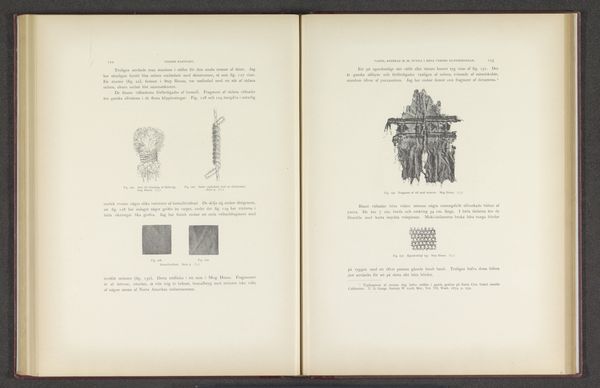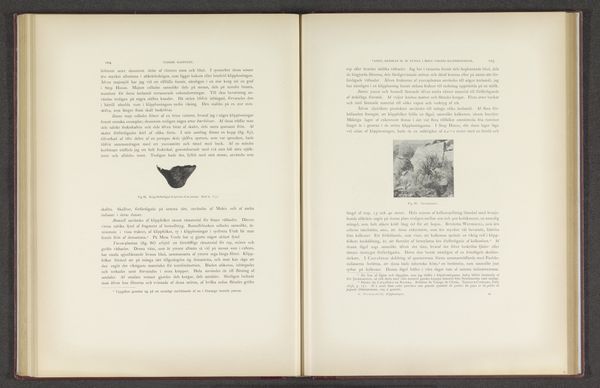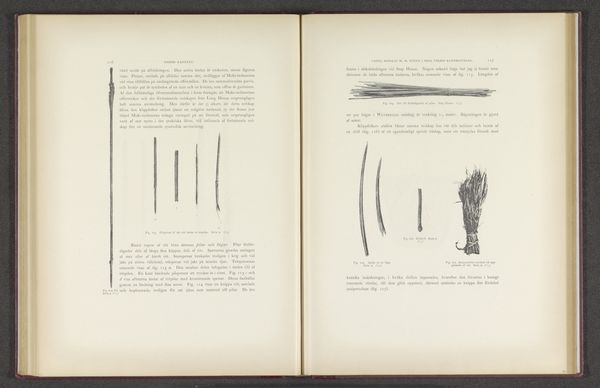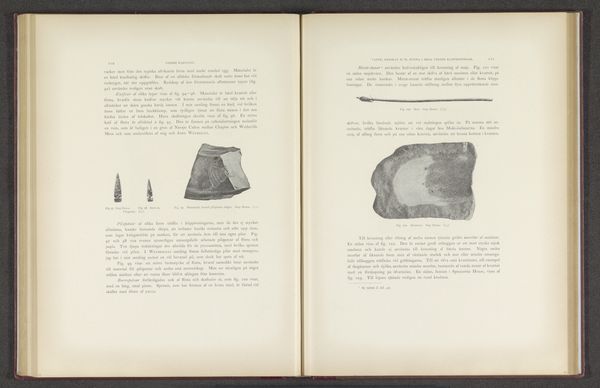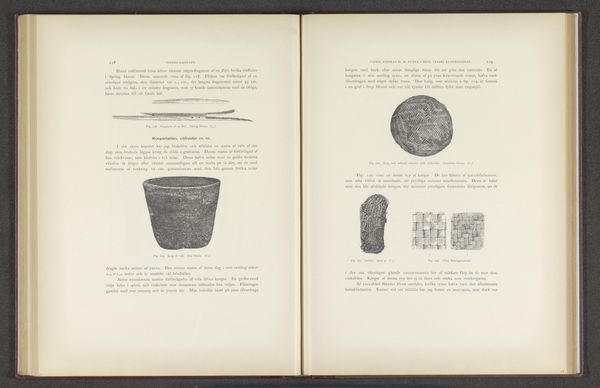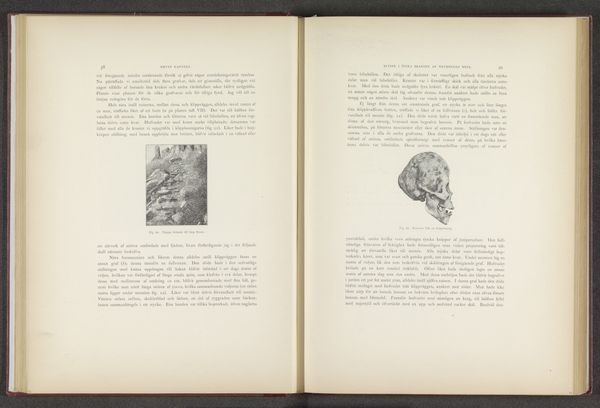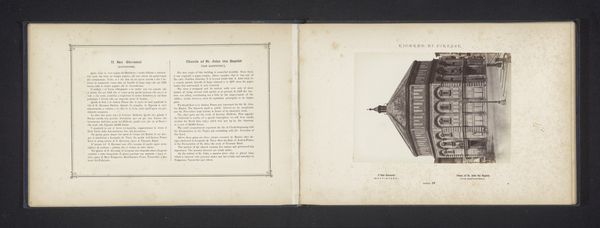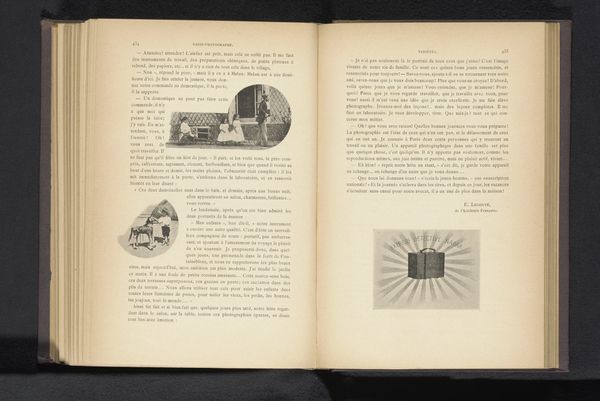
Borstel of bezem van Yucca bladeren die is gevonden in het Mesa Verde National Park before 1893
0:00
0:00
drawing, print, paper, ink
#
drawing
# print
#
book
#
paper
#
ink
#
academic-art
#
naturalism
Dimensions: height 60 mm, width 40 mm
Copyright: Rijks Museum: Open Domain
Curator: Before us, we have a drawing titled "Borstel of bezem van Yucca bladeren die is gevonden in het Mesa Verde National Park," dating to before 1893, by Gustaf Nordenskiöld. It's an ink drawing and print on paper, part of a larger book. Editor: It’s incredibly simple, almost stark. A rudimentary tool depicted with precision. I immediately focus on the relationship between raw material—those yucca leaves—and human intention. Curator: Precisely. Nordenskiöld wasn’t just creating an aesthetically pleasing image. He was documenting artifacts, viewing these objects as crucial for understanding the social structures and daily life of the Mesa Verde people. This book format democratizes that knowledge through dissemination to a larger audience. Editor: Absolutely. Look at the rendering of the yucca. You can almost feel the fibers. This is not just about documentation; it’s also about appreciating the ingenuity involved in crafting practical objects from available resources. The act of making becomes central. Curator: His work embodies the late 19th-century impulse to categorize and display cultures considered "other." Nordenskiöld was driven by scientific inquiry. However, his practice also participated in the larger colonial project of representing Indigenous cultures. Editor: I find myself returning to the yucca. Someone spent time gathering, preparing, and twisting those leaves. We often elevate certain forms of art and relegate the mundane objects of daily use. To think about these objects allows us to re-evaluate and rethink. Curator: It's a document steeped in the complex history of archaeology and representation, a lens through which we must be conscious and responsible viewers. It showcases knowledge production during the late 19th century. Editor: Indeed. By scrutinizing both the image and the text, we can better understand how everyday actions have shaped our material existence and our definitions of the artist's touch.
Comments
No comments
Be the first to comment and join the conversation on the ultimate creative platform.

